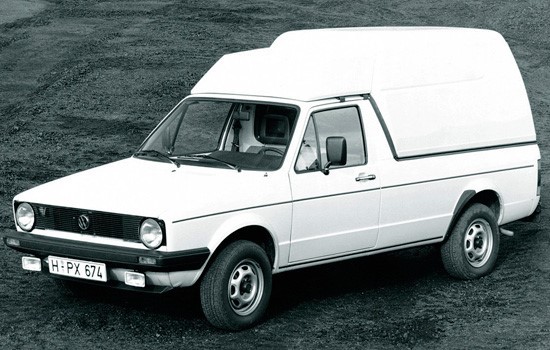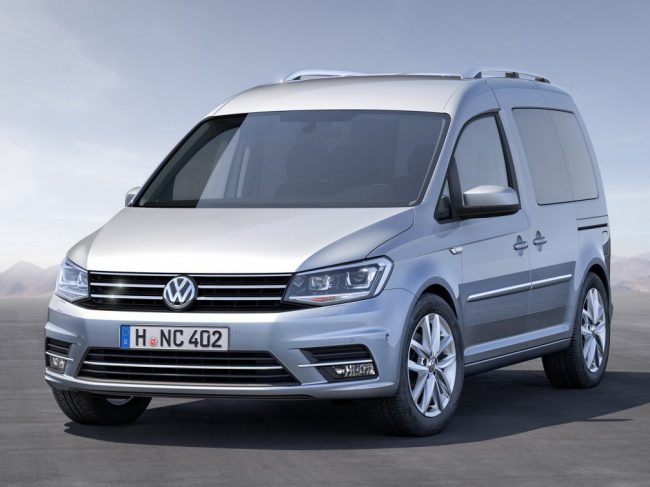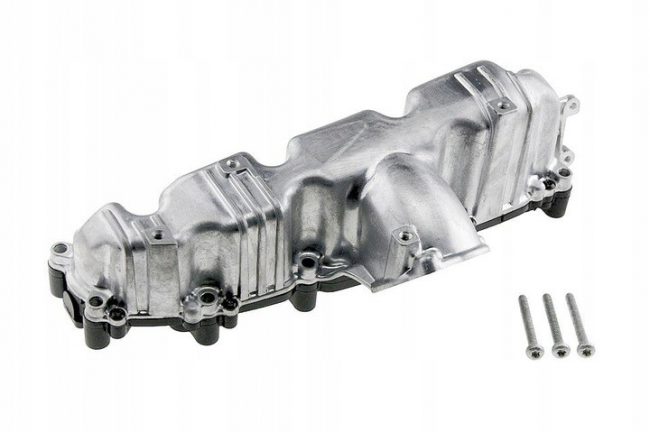
Volkswagen Caddy engines
There are a lot of cars like this nimble pickup on the roads of Europe. The VW experience was later adopted by Peugeot (Partner), FIAT (Doblo), Renault (Kangoo), SEAT (Inca). But the European history of the commercial passenger car Volkswagen Caddy begins, which received the affectionate nickname "heel" on Russian roads. The car was created in 1979 on the basis of a golf hatchback, as a competitor to the Subaru BRAT and Ford Courier.

History of the model
It's unclear why VW's US managers thought the new car looked like a rabbit, but that's what the (Rabbit Pickup) called the Caddy variant for US sales. In Europe, a pickup truck in different versions (with a roof, without a roof, for 1 or 3 passengers) went on sale in 1979. Based largely on the concept of the famous Volkswagen Golf, Caddy received one very significant difference: instead of spring shock absorbers, springs were installed at the rear. This decision fully justified itself: a load-lifting and comfortable pickup truck became a real “workhorse” for those who ran their business in various fields.
The model survived three generations until the middle of the first decade of the 2008st century. And in the Republic of South Africa, the assembly of the second generation Caddy continued right up to XNUMX:
- 1st generation (Typ 14) - 1979-1994;
- 2nd generation (Typ 9k, 9u) - 1995-2003;
- 3rd generation (Typ 2k) - 2004-2010

The basis for the design solutions of the second generation Caddy was the famous Volkswagen Polo sedan. In addition to Germany, conveyor and screwdriver assembly of cars was carried out at SEAT (Spain) and Skoda (Czech Republic) factories.

Caddy Typ 2k turned out to be such a successful project that it was restyled in the last generation (2015), and is still produced in the compact van form factor to this day. Its platform A5 (PQ35) is structurally very similar to the Volkswagen Touran. The car, without changing the concept of the platform and the power plant, was “tweaked” twice: in 2010, the appearance of the Caddy in front became more aggressive and modern, and in 2015, similar alterations overtook the rear of the body.
Engines for Volkswagen Caddy
The miniature form factor of the car does not suggest a lot of space for the power plant. Consequently, the size and performance of engines for the Caddy are also somewhere in the middle between a minibus and a mid-size sedan. As a rule, we are talking about economical diesel and gasoline engines with a small displacement (often with a turbine as a supercharger).
| Marking | A type | Volume, cm3 | Maximum power, kW / h.p. | Supply system |
|---|---|---|---|---|
| AUA | petrol | 1390 | 55/75 | distributed injection |
| AEX,APQ,AKV,AUD | –:– | 1391 | 44/60 | distributed injection |
| 1F | –:– | 1595 | 53/72, 55/75, | distributed injection |
| AHB | diesel | 1716 | 42/57 | direct injection |
| 1Y | petrol | 1896 | 47/64, 48/65, 50/68, 51 / 69, 90 / 66 | OHC |
| AEE | –:– | 1598 | 55/75 | OHC |
| AYQ | diesel | 1896 | 47/64 | Common Rail |
| 1Z, AHU, FTA | turbocharged diesel | 1896 | 47 / 64, 66 / 90 | Common Rail |
| AEF | diesel | 1896 | 47/64 | OHC |
| BCA | petrol | 1390 | 55/75 | DOHC, distributed injection |
| BUD | –:– | 1390 | 59/80 | DOHC, distributed injection |
| BGU, BSE, BSF | –:– | 1595 | 75/102 | distributed injection |
| BSU | turbocharged diesel | 1896 | 55 / 75, 77 / 105 | Common Rail |
| BDJ, BST | diesel | 1968 | 51/69 | Common Rail |
| BSX | petrol | 1984 | 80/109 | distributed injection |
| CBZA | turbocharged petrol | 1197 | 63 / 85, 63 / 86 | OHC |
| CBZB | –:– | 1196 | 77/105 | OHC |
| CAYA | turbocharged diesel | 1598 | 55/75 | Common Rail |
| CAYD | –:– | 1598 | 75/102 | Common Rail |
| CLCA | –:– | 1968 | 81/110 | Common Rail |
| CFHC | –:– | 1968 | 103/140 | Common Rail |
| CZCB | turbocharged petrol | 1395 | 92/125 | direct injection |
| CWVA | petrol | 1598 | 81/110 | distributed injection |
| CFHF | turbocharged diesel | 1968 | 81/110 | Common Rail |
Motorists VW were not afraid to experiment. They have made the Caddy a testing ground for reliability, economy and durability for a very large number of engines.
Which engine is faster than brothers
In such a large array of power plants, which were equipped with all generations of the Caddy compact van, it is quite difficult to isolate one or two of the most reliable engines. In the line of power units - five options with a working volume from 1,2 to 2,0 liters, both diesel and gasoline.

The most powerful of all the engines that have ever been installed under the hood of a Volkswagen Caddy is a two-liter CFHC (EA189 series) with a working volume of 1968 cm3. Maximum engine power - 140 hp, torque at 2750 rpm - 320 Nm.
The first copies of the power plant are dated 2007. Motor features:
- forged crankshaft with 95,5 mm stroke;
- pistons 45,8 mm high;
- Aluminum cylinder head.
The travel resource for the timing belt is 100-120 thousand km. (with a mandatory check after 80-90 thousand km). In the CHFC engine, piezo injectors are installed instead of unit injectors. Turbine type - BV43. ECU - EDC 17 CP14 (Bosh).
The expert assessment of the engine is such that, when using high-quality diesel fuel, it has practically no drawbacks that have a decisive impact on the quality of work and reduce the service life. The engine with factory code CFHC is one of the most reliable diesel engines manufactured by Volkswagen AG.

To ensure a guarantee of a long run, it is necessary every 100 thousand km. thoroughly clean the intake manifold. The reason is the presence of swirl flaps in the collector, which periodically become contaminated. Further the wedge inevitably follows.
The unwillingness to regularly perform this operation leads to another solution, consisting of three steps: turn off the valve - remove the dampers - reflash the car's electronic control unit.
And one more nuance of CFHC motors. After a run of 200 thousand km. the hex of the oil pump must be changed to avoid a drop in oil pressure in the system. This disadvantage is typical for motors with balance shafts produced before 2009.

